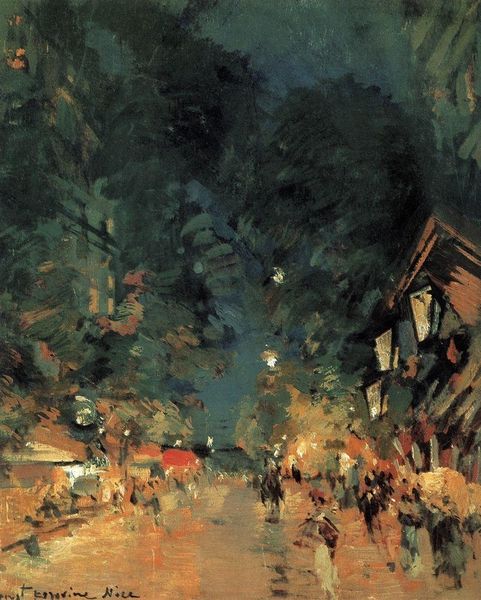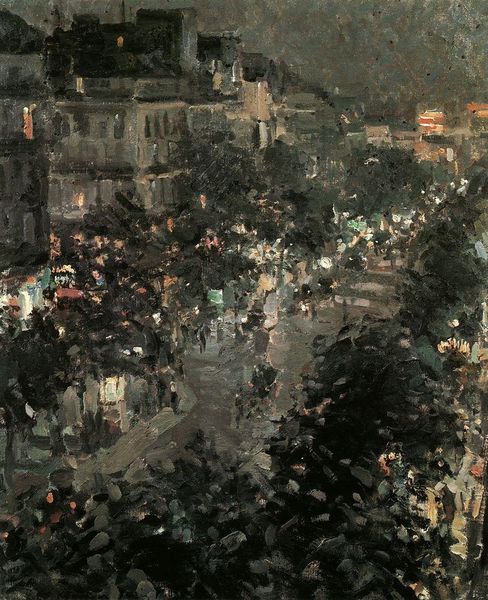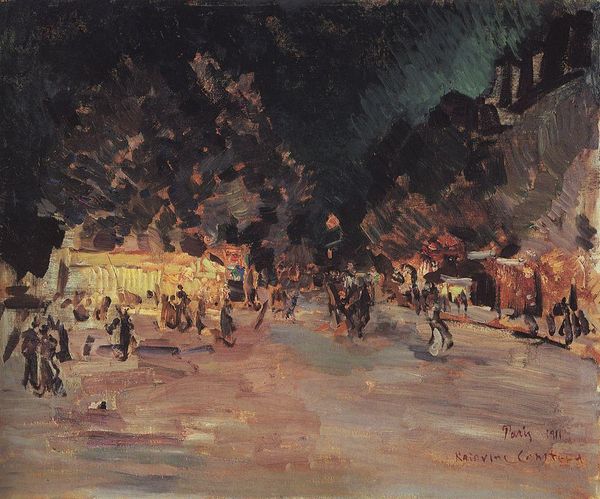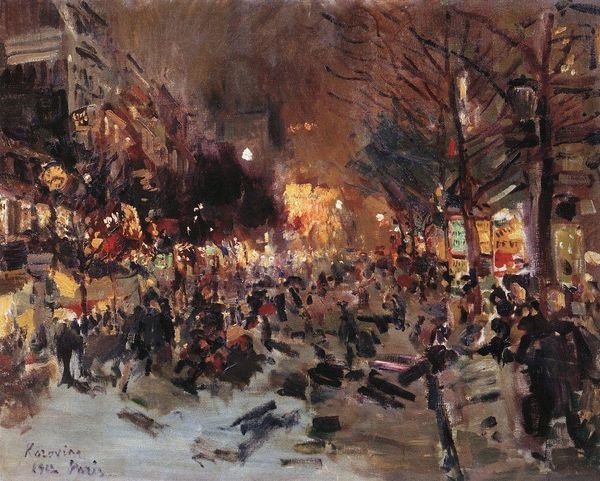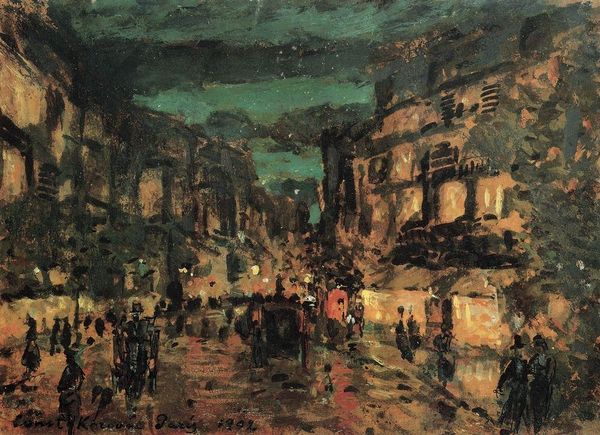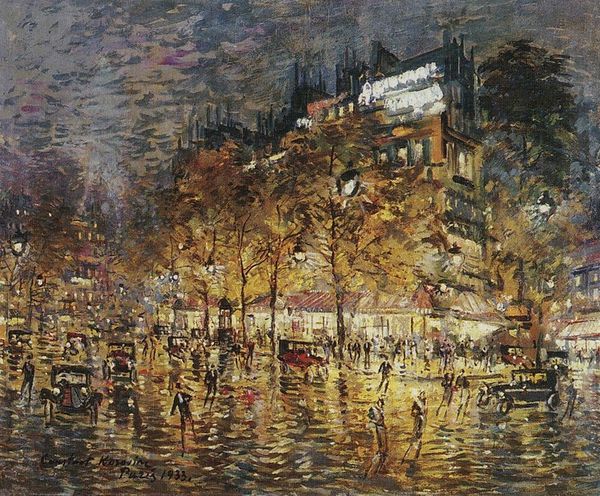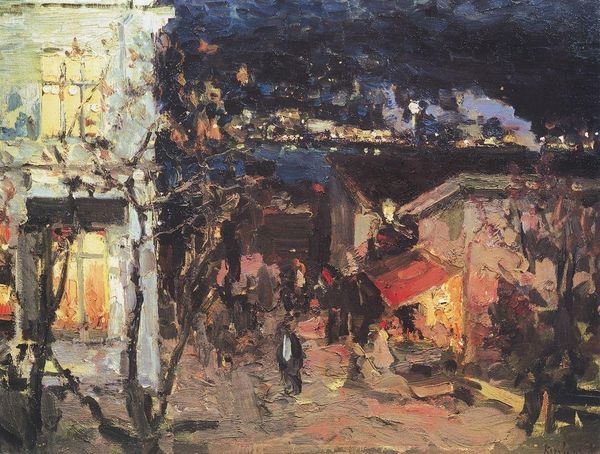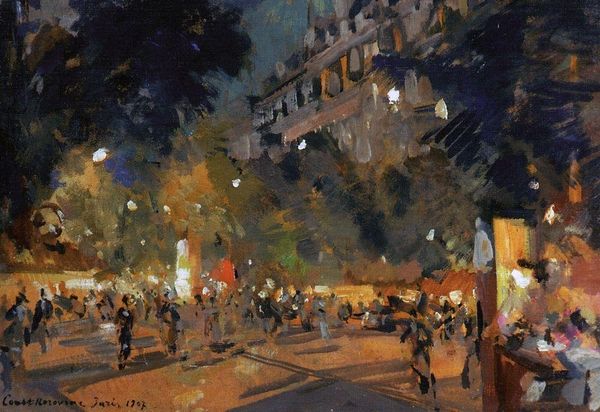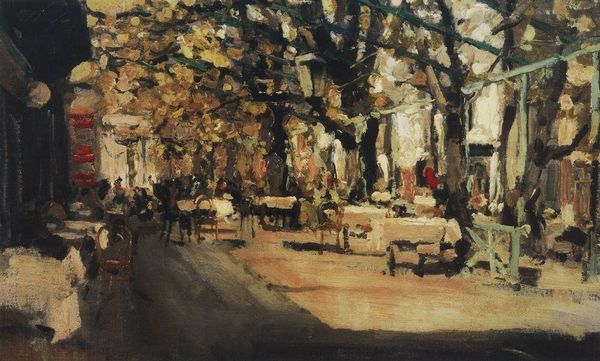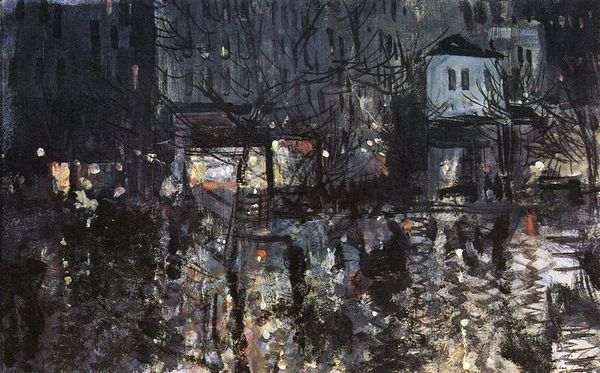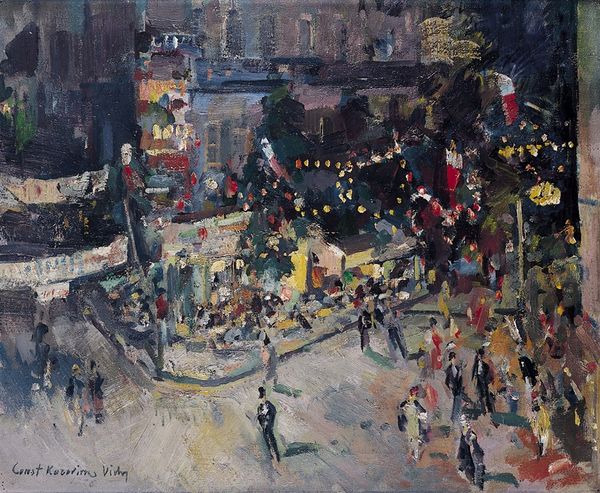
Copyright: Public domain
Editor: Here we have Konstantin Korovin's "Paris by Night," painted around 1920. It's an oil painting, and what immediately strikes me is how the lights seem to dance across the canvas. What can you tell me about the symbols and imagery at play here? Curator: Notice how the light itself is the protagonist. It isn't merely illuminating forms; it *is* the form. Each dab and stroke carries emotional resonance, doesn't it? Think of how light, especially artificial light in a city, signifies modernity, progress, but also fleeting moments. What feeling does the reflected light evoke in you? Editor: A sense of transience, definitely. Like a memory fading at the edges. Curator: Precisely. And consider the historical context: 1920. The First World War's aftermath. Paris was rebuilding, reinventing itself. The shimmering lights, therefore, are not just aesthetic; they symbolize resilience, a beacon of hope emerging from darkness. The very act of capturing a night scene connects with older traditions too… how do these compare? Editor: You mean, like nocturnes by Whistler, or even going back to Rembrandt's dramatic lighting? This seems looser, more focused on pure sensation. Curator: Yes! It is about immediate sensory experience. The blurred figures… Do they suggest isolation even in a crowded space? What continuities do you see here, thinking of what these symbols might mean to people, today? Editor: That's a really evocative way to look at it. It reminds me how much even a fleeting image can be saturated with meaning. Curator: Indeed. It underscores how artists utilize symbols to express deeper cultural narratives, enduring psychological states of hope and loss across time. The painting helps me understand the past through how it looked, but more importantly, how it *felt.*
Comments
No comments
Be the first to comment and join the conversation on the ultimate creative platform.

